The bayonet is the scientific name of the lens mount for photo and video equipment. It can be a mounting system or a special unit with which the lens is mounted on the camera. Leading camera companies have developed their own standards for fasteners, so often the bayonet of one company is incompatible with another. However, there are standardized systems and additional devices (for example, an adapter-bayonet), allowing to install optics from different companies. The most common types of mount: Nikon F, Canon EF and Sony E.
Bayonet F of the Nikon company
With the development of photography, it became clear that full-time optics, tightly connected to the body of the device, are not able to satisfy the creative ideas of professionals. Exit found in the use of interchangeable lenses. Nikon was one of the first to introduce a standard for fixing removable lenses. The bayonet type introduced by Nikon in 1959 is the bayonet used to connect the 35 mm camera (body) and the lens.
Lenses with the original F-mount system were used extensively until 1977, until a compatible AI type element appeared. Even modern ones can be used with an F-type device and work fine with old cameras, although installation may require minor mechanical modifications.
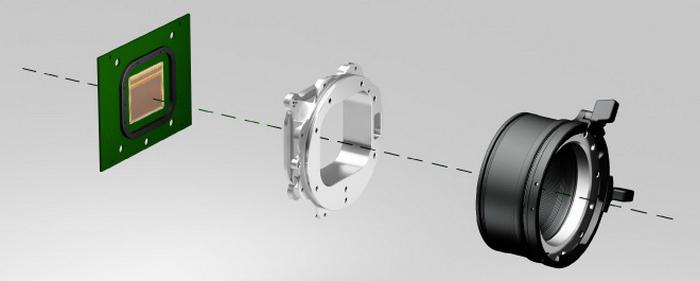
Operating principle
The bayonet is a fairly simple device. In order to connect a type F lens to the camera, you need to manually align the protrusion on the lens with the antenna of the metering system, which was fixed in the f / 5.6 aperture position. Later lenses of this type also became known as pre-AI or non-AI.
Compatibility
Nikon F-mount lenses work fine with all modern Nikon cameras at least in the manual exposure mode, especially if modified to make them compatible with the AI mount. In this case, the modes will depend on the camera model. Matrix metering requires a special modernization of the bayonet, so it, as a rule, does not work with such lenses, even if they are modified to the AI standard.
Design features
Already starting with lenses equipped with the Nikon F bayonet system, the company has used the jumping diaphragm mechanism. That is, this detail is constantly open when you focus on the sharpness and closes only a moment before the moment of photographing. Thanks to this, the image in the viewfinder does not darken and does not make it difficult to guide, even if the diaphragm ring is in the closed position. Structurally, this is implemented in the form of a lever built into the socket of the camera, which is lowered before taking a picture. In the lens is released another lever, which under the action of the spring closes the diaphragm blades.

Nikon AI mount
AI (Automatic Indexing) - an improved version of the first Nikon F mount - was proposed in 1977. Fans of "Nikon" products were waiting for an updated system that allowed them to quickly change optics. Sometimes a masterpiece from a mediocre photo separates a few lost seconds, wasted in replacing the lens. And the photo giant introduced a new bayonet. This is a modernized design, which allowed to put the lens with one hand movement and not to waste time getting the diaphragm into the index bar.
When used on modern cameras, AI lenses can operate in such modes as manual (M) and aperture priority (A) with exposure measurement point or center. Some cameras can also use the matrix metering method.
Old type lenses (F) are very easy to modify to AI by increasing the performance, which, touching the lever in the camera bayonet, reports the position of the diaphragm ring.
Innovations
It was expected that the main innovation would be the establishment of mechanical levers that should inform the camera about the lens. Experts assumed that the new Nikon cameras would somehow use this information. But the upgraded bayonet is not affected. Designers went another way: modern lenses transmit the necessary information electronically. This method was much cheaper and more reliable. AI-lenses are now sold for a pittance, although they are not inferior to modern AI-S (for example, they do not have a quick program mode).
On the territory of the USSR and Ukraine, 35 mm cameras and lenses compatible with the Nikon AI bayonet were manufactured by the Kiev plant Arsenal. Among the cameras were the following:
- Kiev-17;
- Kyiv-20;
- "Kiev-19";
- Kiev-19M;
- Arsat lens ruler.
Nikon AI-s mount
This is the next stage in the evolution of removable lenses. Such a device is used today. From AI, it is easy to cast it using a specific rounded cutout on the bayonet, a scale on the chrome-plated ring (in AI, the surface is black), marked with an orange paint indicating the minimum aperture.
The letter “S” indicates that the diaphragm closing factor linearly affects the deviations of the diaphragm lever indicator in the bayonet. Thanks to the innovation in cameras with autofocus, the measurement accuracy of the diaphragm has increased significantly. For models with manual control, this improvement does not matter.
Compatibility with previous types
- All AI-S lenses are compatible with AI lenses.
- All AF, AF-I and AF-S lenses are also compatible with the AI-S bayonet system.
- All AI-S lenses work on Nikon DSLRs at least manually.
- Most Nikon SLR cameras, including digital ones, can operate in aperture-priority mode, except for a number of amateur-level devices.
Before planning a purchase, familiarize yourself with the camera user's manual, which always contains information about the support of specific types of lenses.
P-mount
This hybrid standard was introduced in 1988 specifically for long-focus hand-held lenses, which were supposed to hold Nikon positions until long-focus AF lenses become widespread. At that time, the best "autofocus" were models with parameters 300 mm f / 2 8.
Nikon released some type P lenses. Among them, 500mm f / 4 P (1988); 1200-1700 mm f / 5.6-8.0 P ED; 45mm f / 2.8 P.
Type P lenses are manual AI-S with a few AF electronic mount contacts added. This approach made it possible to use the matrix metering mode of exposure, which only appeared on the autofocus cameras.
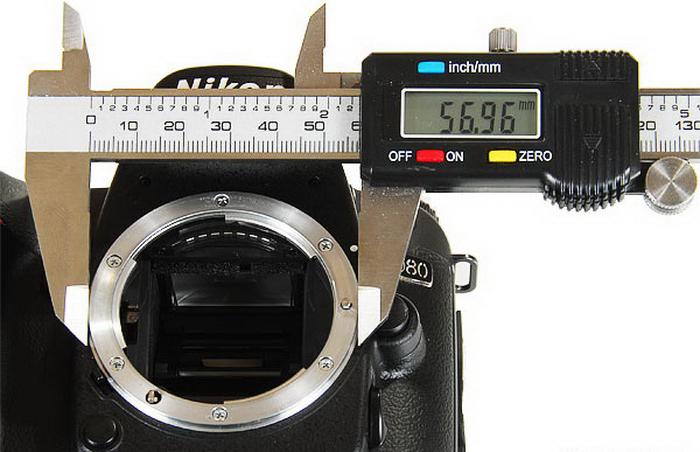
AF type mount
Nikon autofocus lenses AF (except AF-I and AF-S) are aimed at sharpness due to the rotation of the engine in the camera, which is transmitted through a special mechanism to a removable lens. Photographers like the mechanism called the "screwdriver." Now this system looks primitive in comparison with the Canon autofocus system, but this design made it possible, in the distant 1980s, to maintain full compatibility with non-autofocus lenses. All autofocus devices (including AI-S) work fine on non-autofocus cameras. However, devices that do not support AI, still require refinement.
AF-N mount
The AF-N designation was introduced only to distinguish the AF lenses of the old series from the newer ones. After the release of the first AF lenses, the Nikon decided that with such a convenient technology, no one else would take pictures in manual mode. Therefore, the first AF lenses were equipped with a thin uncomfortable manual focus ring, which was almost impossible to use. However, it turned out that photographers like the good old wide rubberized focus rings. Therefore, the engineers returned them back to the autofocus lenses and called the new modifications AF-N. Modern lenses are equipped with convenient focus rings, so the AF-N designation no longer applies to them.
AF-D mount
Objectives in this category inform the camera's “intelligence” about the distance at which they are focused. Theoretically, in specific situations, this should help the matrix metering system to determine the exposure more accurately, especially when using a flash. But in practice, AF-D bayonet has more marketing value than practical. Moreover, the presence of AF-D can even cause an incorrect exposure determination if the flash and the matrix (film) are at different distances from the subject.
Focusing speed has nothing to do with the presence or absence of AF-D mount support. Simply, these are newer lenses, so they function faster than their predecessors. All AF-D lenses, like AF and AI-S, work great on non-autofocus cameras.
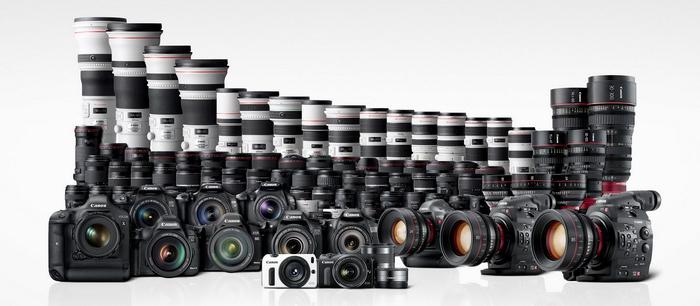
Canon ef
The bayonet is not an exclusive concept of the Nikon company. Other companies also developed their interchangeable lens mount systems. The everlasting competitor - Canon - is also famous for its well-thought-out types of bayonet construction. At a time when Nikon promoted the AI-S system, Canon presented an excellent EF mount.
The Canon bayonet first appeared on the EOS 650 camera in 1987, when the company launched autofocus SLR cameras in a series. This element differed from analogs, first of all, by the presence of electrical contacts, through which control information was transmitted to the lens. At the same time, the EF bayonet refused mechanical control of the diaphragm, autofocus drive and some other properties. Much later, a similar control variant used Olympus in the Four-Thirds system.
Canon EF-S
The EF-S version provides a short section from the back lens to the image sensor. It is partially compatible with the EF standard, since lenses with an EF bayonet can be used in cameras with an EF and EF-S bayonet.

Sony Bayonet E
Bayonet E is a brand mount developed by Sony for lenses to mirrorless cameras of the Alpha NEX series and to NXCAM video cameras. This is a fairly recent development introduced in 2010 and implemented for the first time in Sony α products (NEX-3, -5 cameras). The connection feature of the E-mount system is a ten-pin digital interface.
The bayonet with the “E” index is used in mirrorless compact cameras equipped with matrices that give out the quality of images at the “SLR” level. At the same time, Sony engineers use bayonet A for SLR cameras for advanced interchangeable optics with a system of translucent mirrors. Two systems in addition to some design features differ in the size of the working segment. This is the distance from the focal plane (matrix) to the end of the lens. In mirror cameras, the matrix and the lens are separated by a mirror; therefore, the working segment is large, the physical size of the interchangeable optics increases. The device doesn’t need a mirror for the bayonet E, therefore the lenses are much lighter and more compact.
Compatibility with products from other manufacturers
Surprisingly, the Japanese designers did not choose their own path, but chose an open strategy. The special features of the development such as the Sony E bayonet make it possible to manufacture specialized adapters that connect the lens with almost any modern mount from the following companies:
- Pentax;
- Olympus;
- Nikon;
- Leica;
- Hasselblad;
- Exakta;
- Minolta AF;
- Canon EF;
- Contarex;
- Contax;
- Rollei;
- Micro 4: 3;
- Threaded T-mount, type C, M39 × 1, M42 × 1 and others.
In 2011, the company discovered the features of such a device as the Sony bayonet, which allows third-party companies to produce their own lenses for Japanese cameras.
Conclusion
At first glance, the bayonet is not a technically complex design. However, this node performs several important functions. It allows you to change the types of lenses depending on the tasks performed, and the more elaborate the design, the faster and more convenient the replacement of the optics. The second important task is the transfer of digital information in modern cameras through electrical contacts on the lens and bayonet, which allows the lens and camera to synchronize to obtain the highest quality images and video frames.
Who does not know, this section will be added materials, which are worth reading sequentially.
A bayonet is a system for attaching a lens to a camera. Located on the front of the camera. Thanks to him, the lens is securely attached to the camera and communicates with it through an electronic interface.
Being interested in etymology, you can go to the dictionary and see that the term “bayonet” itself comes from the French baïonnette, which means “bayonet lock, bayonet connection” or “bayonet”. By the way, an interesting coincidence - “baïonnette au canon” translated from French - “with a closed bayonet”. That's where Canon’s roots come from))
Connecting the lens to the camera can be divided into two main tasks:
- Mechanical. The lens must firmly and firmly hold, performing work on the transmission of light and its refraction through a system of lenses. The light should fall into the viewfinder and the matrix in accordance with the ideas of engineers.
- Electronic. Modern lenses are crammed with electronics. The bayonet ensures the connection of the electrical contacts located on the lens and on the camera. For example, you have autofocus.
The bayonet and its elements in practice
Perhaps you are just starting to delve into the photo business, and then immediately some bayonet, electronic interfaces, or vice versa unnecessary details ... In this case, at the end of the article.
If you look at the camera, you can see the metal circle, which is attached to the camera with screws. In my case, 6 screws. On the same surface there is a metal pin, which is a spring (in the example it is marked green). Creates feedback in the form of effort when trying to fit the lens with the camera.
Connecting the camera and lens
Suppose you need to connect a lens to a camera. I tell by my example. You will have a similar principle. In the image above you see a white mark (on the watch dial for 2 hours). On the lens body in the part of the bayonet connection there is the same white mark. We press the lens to the camera so that these labels match. We rotate the lens counterclockwise (Nikon, Canon - clockwise, read the instructions from other manufacturers or try it very carefully) until it clicks. That's it, the lens is securely attached! To remove it, click on the large button to the right of the bayonet (at 3 o'clock on the dial) and, holding it, rotate the lens clockwise.
Do not drop the lens or camera when removing / putting on the lens.
Do not hold the camera open - wear either a lens or a cap to prevent dust.
About the electronic component of the bayonet. Modern lenses in their mass are automatic, not mechanical, and have electronically controlled aperture and focus. Naturally, these functions can only work in conjunction with a camera from the same manufacturer. Electronic contacts are located on the camera and lens, are combined with the docking. Look at the photo below.
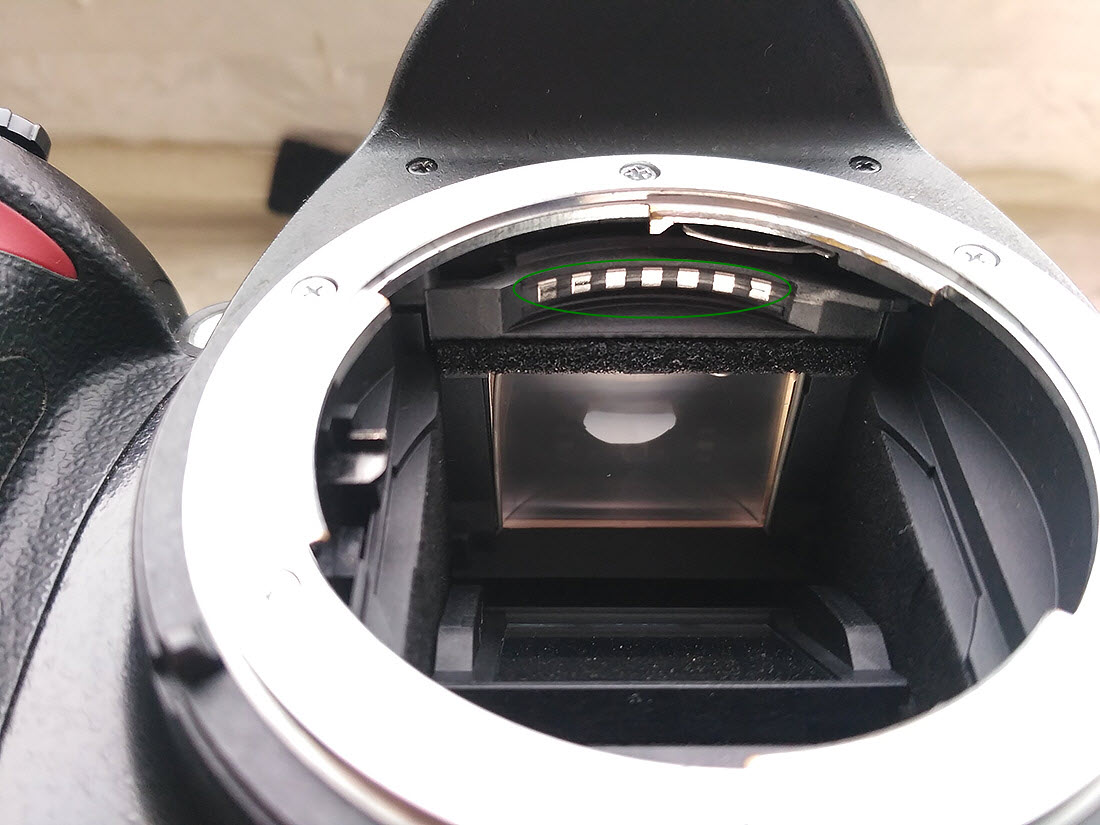
Electronic contacts on camera

Electronic contacts on the lens
Contacts are used to supply power to the drive and the microprocessor of the lens (today all autofocus lenses are equipped with them). Earlier on the bayonet in the camera was a mechanical unit that physically "twisted" the lens, adjusting the autofocus. Now there is practically no such thing, and is used only when working with old lenses that do not have drives, called a screwdriver. Modern lenses have high-precision servo drives.
Keyboard mount characteristics
The mount on the camera is always made of metal. The lens can be made of plastic or metal, depending on the class of the lens. Of course, it is better, the metal version - this way you can make an infinite number of lens unfastening-reshuffling, long-focus heavy lenses are also less loose with a metal mount.
The work segment is an important characteristic of the bayonet. Determines the distance between the plane of the matrix and the plane of attachment of the lens. The working segment is measured in millimeters, determined for each system. For example, at Nikon it is equal to 46.5 mm, at Canon - 44 mm. In practical terms, the essence lies in the possibility of installing lenses from non-native systems. Suppose you have a Canon camera. If the lens belongs to a system that has a larger working segment, then its installation is potentially possible with the help of adapters.
However, I note that ordinary users should not do this. It is better to gradually assemble a modern park of optics than to engage in such experiments.
Manufacturer mountings
Even one manufacturer may have a dirty trick and, having bought a lens suitable for a Nikon camera, you will not get it working correctly. Some have guessed that we are talking about the size of the matrix. And a lens that is designed for a camera with a smaller matrix will not work as it should on a camera with a larger matrix. That's the opposite - completely. However, this is the topic of our subsequent conversations. Below I present a list of markings of bayonet mountings.
| Camera manufacturer | Bayonet |
|---|---|
| Nikon | F (FX) |
| F (DX) | |
| 1 (CX) | |
| Canon | EF |
| EF-S | |
| EF-M | |
| Sony | α-mount |
| E-mount (F) | |
| E-mount (FE) | |
| Panasonic, Olympus | 4/3 (FT) |
| micro 4/3 (MFT) | |
| Fujifilm | X |
| Pentax | K |
| Q | |
| Samsung | NX |
| Leica | M |
If you have a camera and you plan to purchase a lens, then be sure to choose a lens for your labeling. Use the appropriate filters in online stores. For example:
![]()
Of course, do not hesitate to ask your questions in the comments - I will definitely try to answer.
Security questions
Comes without a lens. Selling the camera just like that, with a visible mirror and other elements, as in the first image, the manufacturer can not allow. This is about how to let go of a patient with an open wound without bandaging. Therefore, a plastic cap is installed in place of the lens. Looks like that:

Important! Do not lose this stub upon purchase. Never leave the camera body open. In order to avoid dust, dirt inside and mechanical damage, never leave the camera open - it should have either a cap or a lens. Exceptions are cases of changing the lens and cleaning the camera.
If you purchase a used camera, ask about the presence of such a plug.
These are the basic rules of photo hygiene. Like daily teeth cleaning. Just remember and do it all the time.
Do not take the above mentioned as just another useless advice that can be scrolled through. This is really important.
Summary
- Bayonet performs the function of mechanical and electronic attachment to the camera.
- Do not expect to install a lens with one bayonet connection on the camera with another. This is partly possible with the help of adapters, but these are unnecessary dances with a tambourine. Therefore, I advise you to focus on the acquisition of lenses that are suitable for your system (read the camera).
- Even in the case of a single bayonet, for example, F from Nikon, when choosing a lens, you must start from marking. If you have a full-frame SLR camera, then you should choose a lens for the F (FX) mount.
Page 1
| Bayonet fixing stopper (a, bayonet connection (b and the shape of the hole in the connected parts (in. |
Bayonet connection is used in cases where the exact relative position of the parts to be combined is not required, but the speed of connection and separation is necessary. The stopper is made under the slot or has a knurled head. In the lower part of the stopper, a spring bracket is pressed in, which, after inserting the stopper into the hole with eyelets and turning on 90, presses the jointed sheet parts together.
The bayonet connection, in contrast to the dovetail lock, is based not only on the axial movement, but also on the rotation of one of the parts relative to the other. The role of pins on parts such as round covers can perform protrusions, decorated sectors and in the slot between which the protrusions on the body when the axial movement of the cover. When you rotate the cover tabs on the body are located behind the tabs on the cover.
The bayonet connection at the working end of the barrel allows you to detach the head and remove the manipulator from the ball joint.
Bayonet connections allow you to quickly connect and disassemble cylindrical parts. As can be seen from fig. 34, when assembling such a connection, the protrusions of one part enter into the slots of another hollow part, and the connection is tightened by turning one part relative to the other. This method is often used for fastening connectors, screens of finger-type radio tubes and other parts.
Bayonet connection nozzle with a heating cylinder is rarely used.
Elements of the bayonet connection, perceiving the load from the pressure of the medium, are calculated for the strength of this load according to the well-known formulas of resistance of materials.
Thanks to the bayonet connections, the filter element 2 is easily removed from the housing. Together with them, the sediment is removed. The filter is installed on the pressure line of the pump above the level of the paint in the bath so that the paint can completely drain from it after the pressure is removed.
In the bayonet joint (Fig. 173), one part has cylindrical protrusions (pins) on the outer surface (usually two), and the other has cuts, according to the number of protrusions of the first part. When connecting parts of the protrusions are in the slot. Parts are rotated relative to each other and thus ensure their connection.
Bayonet or bayonet connections (fig. 277) are made with pins /, protrusions 2 or screws 3, which are inserted into special-shaped slots on the twin part by turning one of the parts to be joined. To connect parts of a cylindrical shape (Fig. 277, a - d), you can use one pin (screw), on the planes (Fig. 277, e) - at least two screws.
As a kind of locking connections, one can consider bayonet connections of parts by means of axial movement and rotation (sometimes lateral displacement) of one of them relative to the other.
Many novice photographers believe that the camera determines the quality of images. They choose the camera itself for a long time and scrupulously, but the question of choosing lenses to it is often ignored. But it’s not for nothing that SLR cameras and mirrorless cameras have interchangeable lenses. This gives the photographer the opportunity to choose from the widest model range the most suitable lens for his tasks. It is the lens, not the camera, that is responsible for many of the qualities of a future photo: for example, the viewing angle, detail, depth of field, beauty of the background blur (bokeh). In addition, the lens affects the color reproduction, as well as the contrast of photographs.
The camera can provide high resolution of the matrix, low level of digital noise, high-quality autofocus. But the lens will answer for how high-quality the image gets into the camera. Figuratively speaking, the lens is the photographer's brush. Selecting a suitable brush, the artist will be able to paint a beautiful picture. Choosing the right lens will help the photographer to get beautiful and high-quality photographs. Let's find out how the lens works and what characteristics it has. This will help not to lose the choice of the ideal optics for specific creative tasks.
Lens mount
A bayonet is a special mount that is responsible for mounting a lens on a camera. Cameras from different manufacturers have different mount-mount. In addition to the mounting mechanism itself, modern bayonettes allow the lens and the camera to exchange data with each other. For this are electronic contacts on the bayonet.

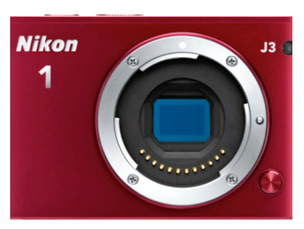
Caution: the mirror and the matrix!
Having removed the lens from the camera, you will find behind it a mirror (in the case of mirror devices), a matrix, and a shutter of the camera. All these details are very delicate: you should not touch them, it threatens with a non-warranty repair of the camera. Try not to hold the camera for a long time without a lens: dust, dirt, moisture can get into it. All this can settle on the matrix, and black specks will appear on the pictures. Of course, nothing fatal will happen even if the dust still gets inside. Modern cameras have a system of ultrasonic cleaning matrix, and if such a system can not cope, the dust from the matrix can be removed in the service center. But all this - extra trouble, which can be easily avoided. Change lenses quickly, without stopping. Changing the lens on the street in bad weather (rain, snow, dust) is not worth it. If the need arises, hold the device with the bayonet down to minimize the possibility of dust getting inside.
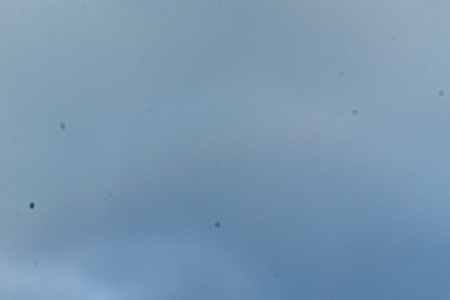
Lens device and its main characteristics
The simplest lens, or monocle, consists of only one lens. But monocles are no longer used. After all, they can not provide the necessary image quality for modern cameras. In modern lenses, not one lens is used, but complex systems of several elements, the number of which can reach up to two dozen. The combination of lenses installed in the lens in a certain order is called an optical circuit. Different lenses, depending on their characteristics and purpose, are built according to different optical schemes.

Optical scheme of the lens Nikon AF-S 50mm f / 1.4G Nikkor
The main characteristic of the lens is its focal length. It defines the viewing angle. By choosing a certain viewing angle (which means a certain focal length of the lens), we can either show close-up objects away from us, or vice versa, shoot with a wide field of view. The focal length of the lens is measured in millimeters. The longer the focal length of the lens - the narrower its viewing angle. And vice versa: the shorter the focal length, the wider its viewing angle.


I haven’t specifically mentioned any specific numbers and values, because they will depend heavily on the camera model you are using. Or rather, on the size of its matrix. For now it is important to simply understand the pattern. Practical application of lenses with different focal lengths will be devoted to our separate lesson.
Any modern lens is equipped with a diaphragm mechanism. The aperture is used to control the amount of light passing through the lens. In addition, the aperture affects the depth of field and the degree of background blur in the photo.


Modern lenses use the so-called iris diaphragm. The mechanism of an iris diaphragm consists of several petals, which, by compressing and expanding, are capable of increasing or decreasing the opening between them. It is through this hole that the light passes. Closes the aperture - the amount of light passing through the lens decreases. The diaphragm opens - the amount of light passing through the lens increases.
The open aperture of the lens will correspond to its maximum relative aperture (this concept is often confused with the aperture ratio, which will be discussed below). This is also an important characteristic of the lens. After all, the larger the relative aperture, the more light can pass through the lens, and therefore we can make better shots in low light by reducing the exposure time and, consequently, by reducing the blurring. Strongly simplifying, we can say that the relative aperture is the ratio of the diameter of the opening of the diaphragm to the focal length of the lens. In this way, we will get the relative aperture values like 1 / 1.4, 1 / 2.8, 1 / 5.6, 1/8, etc. Here we see that the smaller the fraction in front of us, the smaller the aperture opening. However, in the designation of the diaphragm for brevity, the standing unit is almost always discarded, and only 1.4, 2.8, 5.6, etc. remain. Also, the letter “f” is often added before these numbers instead of one: f / 1.4, f / 2.8, f / 5.6, etc. On the camera, the aperture is denoted even simpler: F1.4, F2.8, F5.6, etc. With this designation, the larger the number, the smaller the aperture opening, and the weaker the background blur.


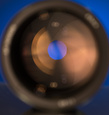
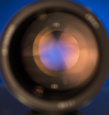

The selected aperture value is indicated on the camera screen and in the viewfinder. The control of aperture in modern cameras occurs right from the camera itself, with the help of its controls.

The current aperture value on the screen of the camera Nikon D5300

The aperture value on the Nikon D7100 information screen
In addition to the optical system and aperture, the lens contains a focusing mechanism that allows you to focus it at a certain distance. Note: the lens does not focus on any object, but at a certain distance. These are the laws of optics. When focusing in the lens, one or another lens unit moves, depending on the lens design. Those lenses are famous for their reliability in which the internal lens unit moves while focusing. Then external factors do not affect it, dust gets less inside the lens as it moves.
Focusing the lens can be done with your own hands, turning a special ring on the lens. This method is called manual focus, and lenses that focus only manually are called “manual” or “manual” (from the English. “Manual” - manual).
With the exception of some special lenses, all modern Nikon lenses have the ability to autofocus. Of course, autofocus is very convenient. The speed of automatic focusing will strongly depend on the model of the camera and the quality of its autofocus sensor, and on the lens: how fast it can focus on sharpness.
Lens aperture
The value of the maximum open aperture of the lens is often called aperture. For example, the open value of the lens aperture is F2.8. Therefore, F2.8 is the aperture ratio of this lens.
However, this idea of luminosity greatly simplified. The definition presented above refers to the concept of maximum relative aperture of the lens. When it is taken into account only its geometrical parameters, but it is forgotten that some of the light can be lost in the thickness of the lens glass (not one glass has absolute transparency), a part is reflected from the lens surface. Therefore, it may be that two lenses with an equal maximum relative aperture will transmit different amounts of light. If the maximum relative aperture is always indicated in the characteristics of the lens, then the photographer can only speculate on the real luminosity of the lens and learn it from his own experience. Further, for simplicity, we will use the simplified concept of luminosity, putting an equal sign between luminosity and the concept of “maximum relative aperture”.
“Luminosity does not happen much” - a popular expression among photographers. In this they are right: the more lens aperture, the easier it will be to shoot in low light. Lenses with a high aperture beautifully blur the background during portrait photography. Aperture often determines the class and price of optics. Lens simpler have a weak luminosity (F3.5 - F5.6). More advanced and expensive models have a greater aperture, lenses with aperture of F2.8 and more are often referred to as aperture.
Zums and fixes
Lenses are divided into two categories: with a fixed focal length and with variable.
Lenses with variable focal length, or zooms, are good for their versatility. Changing the focal length of the lens, we change its angle of view. With the same lens we can shoot both general plans and more distant objects. In simple terms, such lenses are able to “zoom in”. Zums because of their versatility are widespread.
Examples of zoom lenses:

Nikon AF-S DX Nikkor 18-55mm f / 3.5-5.6G VR - inexpensive, but universal zoom lens, which is often supplied with the camera. The so-called “whale” lens.

Nikon AF-S 24-70mm f / 2.8G ED - professional zoom lens. It is famous for its excellent image quality and powerful, reliable design.
But they have disadvantages. Often, image quality is sacrificed for the sake of universality. The aperture ratio of zooms is also generally small compared to fixed focal length lenses. Fixed lenses (discrete lenses, fixes) have a constant, not changeable focal length. And this means that they cannot change the viewing angle, they cannot “zoom in, move away”. But they have a lot of other advantages. The main one is the excellent image quality. Also, fixed lenses may have a very high aperture ratio that is not available for zooming: F1.4 or even more.
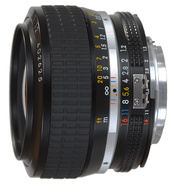
F1.2 super-fast lens with Nikon MF 50mm f / 1.2 Nikkor manual focus
Let's sum up:
The focal length of the lens depends on its viewing angle.
Lenses come with a fixed focal length (fixes) and variable (zooms). Fixes do not know how to change the viewing angle, but they give excellent picture quality and have a high aperture ratio. Zoom can change the viewing angle, therefore, more versatile. But for the sake of universality, image quality and luminosity are sometimes brought.
The aperture controls the amount of light passing through the lens and the depth of field in the photo. The diaphragm can be opened and closed. It is usually denoted by numbers, before which the letter “F” is placed. For example, F1.4, F5.6, F8. And the larger the number, the more closed the diaphragm it stands for!
The maximum open aperture of the lens is often called its luminosity. The more aperture - the easier it will be for a photographer to shoot in low light and the better the lens will blur the background in the image.
Other lens characteristics
Minimum focusing distance
Any lens has minimum focusing distance, closer to which he can not focus. The minimum focusing distance can vary depending on the lens model from a few meters to a few centimeters. An important point: the minimum focusing distance is not measured from the front lens of the objective, but from the plane in which the camera matrix (focal plane) is located. The camera even has a special label for its designation:

Naturally, the smaller the minimum focusing distance, the more close-up you will be able to shoot subjects. Lenses designed for macro photography (that is, for shooting with a large scale) have a very short minimum focusing distance. For example, the minimum focusing distance of the lens Nikon AF-S DX Micro Nikkor 40mm f / 2.8G is only 16.3 cm. If they are counted from the plane of the matrix, taking into account the length of the lens itself, it turns out that the lens can focus very close to the subject.

How to find out the minimum focusing distance of your lens? It is always written in its characteristics that are easy to find on the Internet. In addition, it is often written on the front side of the lens:
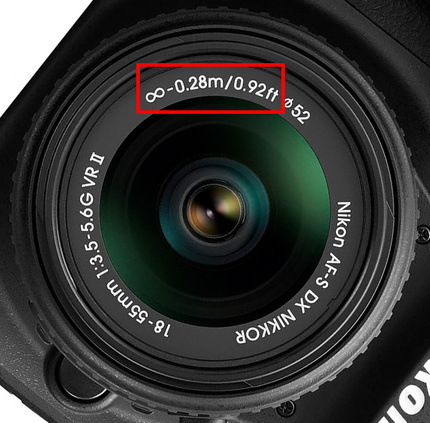

Great Encyclopedia of Oil and Gas
Why do people get sick, explanation from different points of view, preventive measures
How to photograph in the fall, some practical advice
Unknown Leonov: you have not yet seen the cosmos legend
How to make a paper machine